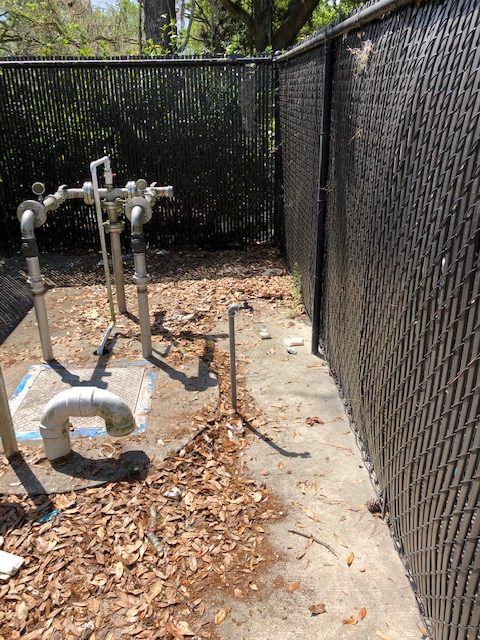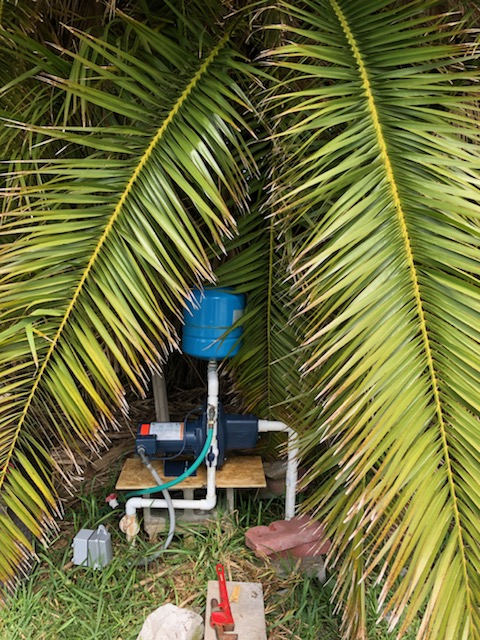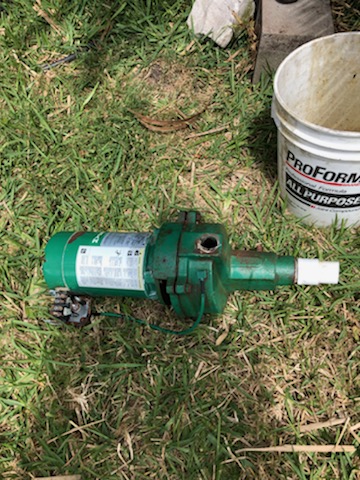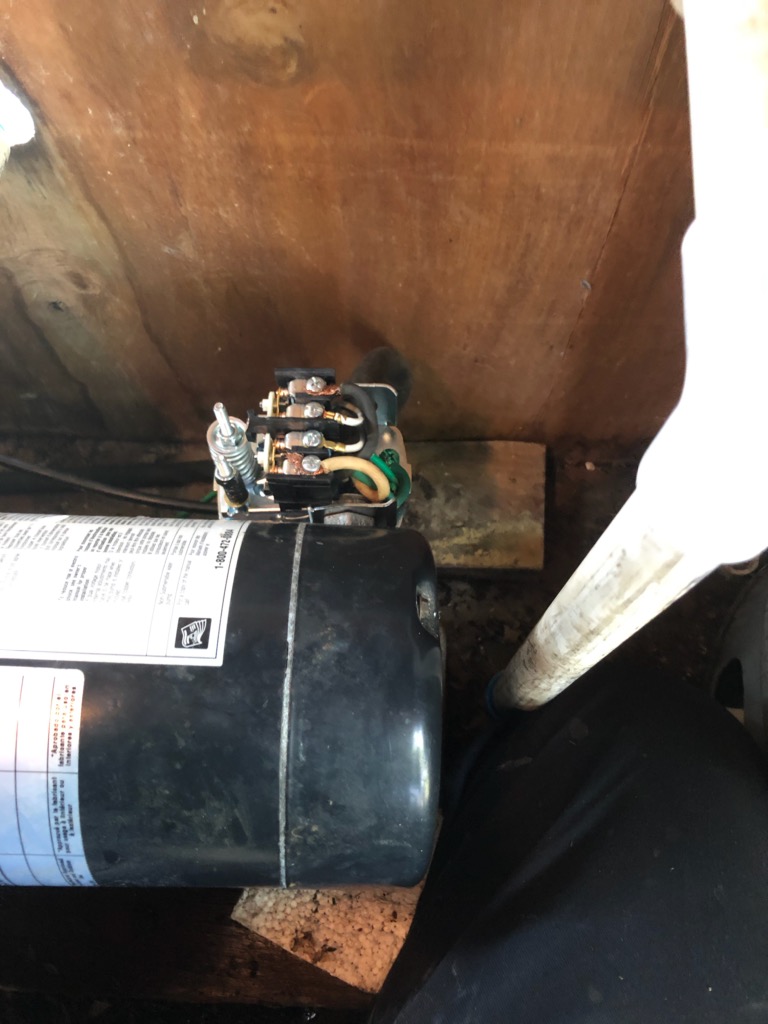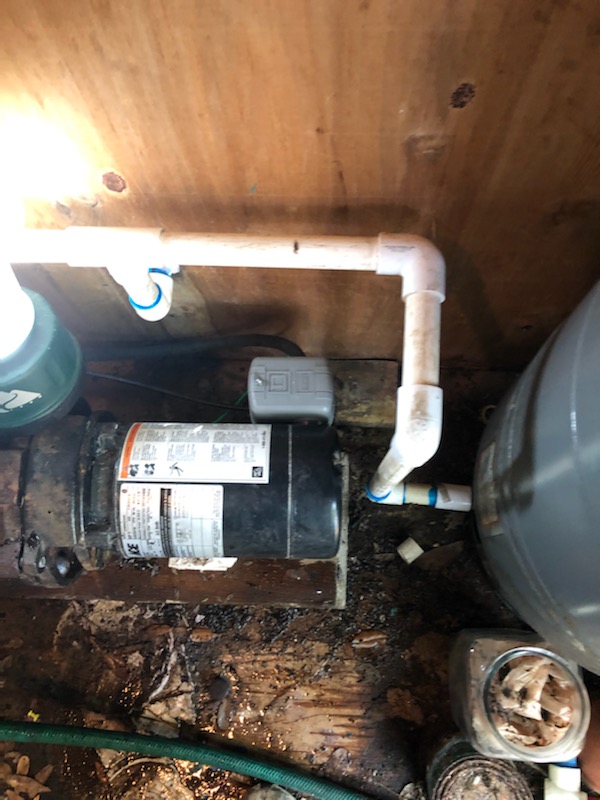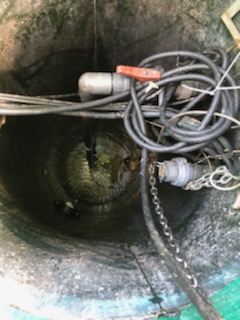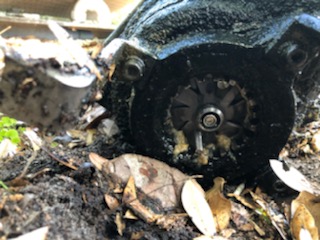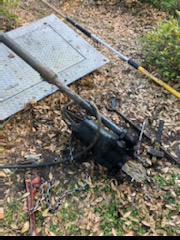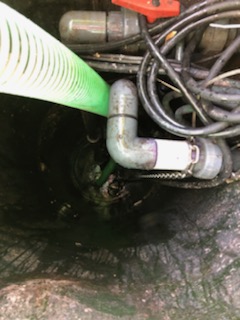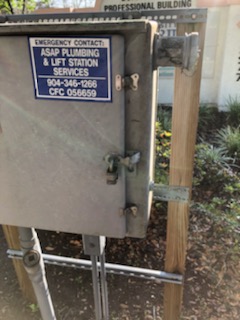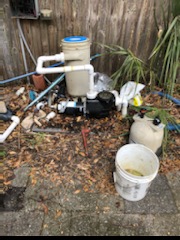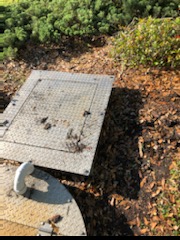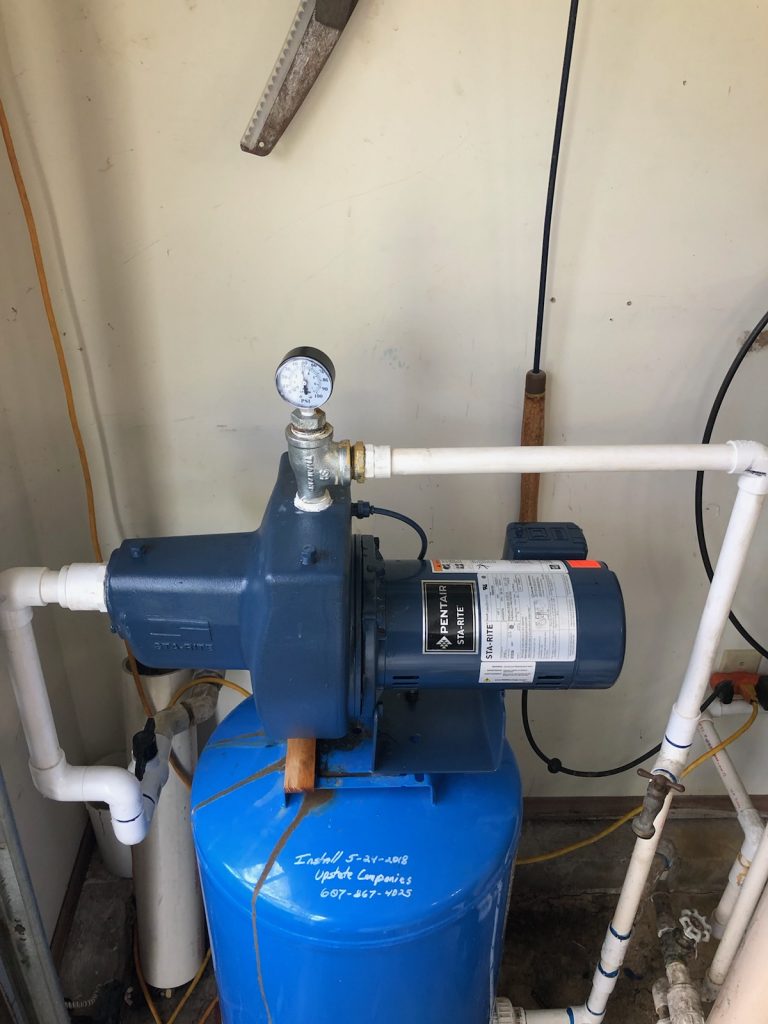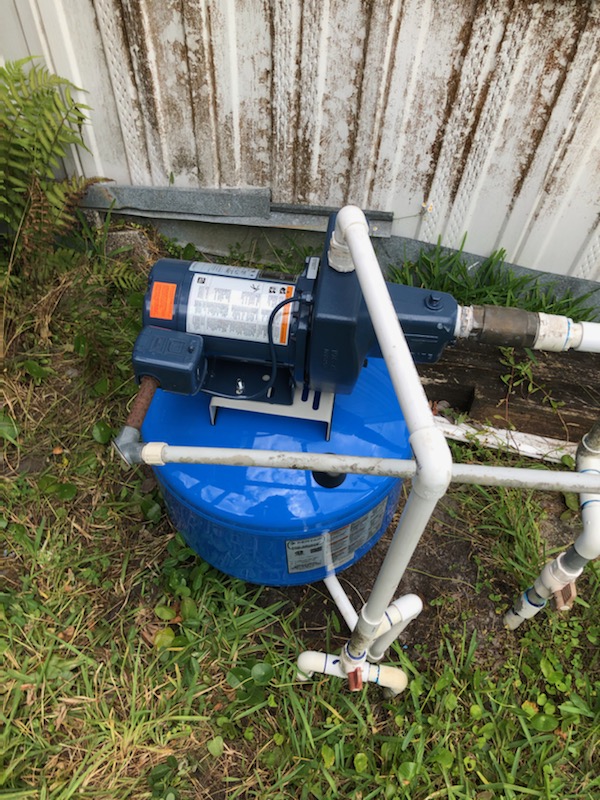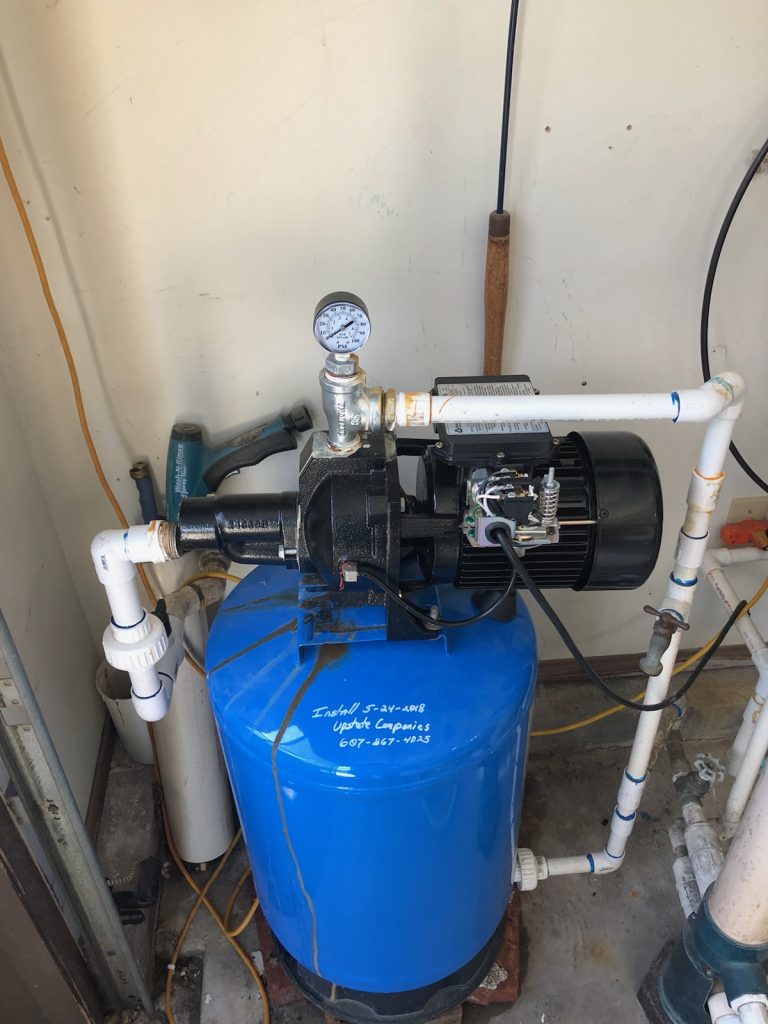AGRICULTURAL FERTILIZERS and Irrigation Systems by ASAP plumbing 904-346-1266
Jacksonville Duval County 904-346-1266
St Augustine St Johns County 904-824-7144
Orange Park Clay County 904-264-6444
Jacksonville Beaches Duval County 904-246-3969
Fernandina Nassau County 904-277-3040
Macclenny Baker County 904-259-5091
Palm Coast Flagler County 386-439-5290
Daytona Volusia County 386-253-4911
Serving all of Florida and Georgia at 904-346-1266
EMAIL LARRY@1STPROP.COM (feel free to email your bidding packages here)
CHAPTER 576
AGRICULTURAL FERTILIZERS
576.011 Definitions.
576.021 Registration and licensing.
576.031 Labeling.
576.041 Inspection fees; records; bond.
576.045 Nitrogen and phosphorus; findings and intent; fees; purpose; best management practices; waiver of liability; compliance; rules; exclusions; expiration.
576.051 Inspection, sampling, analysis.
576.055 Deconing.
576.061 Plant nutrient investigational allowances, deficiencies, and penalties.
576.071 Commercial value.
576.085 Minimum plant nutrient content.
576.087 Antisiphon requirements for irrigation systems.
576.091 Fertilizer Technical Council.
576.101 Cancellation, revocation, and suspension; probationary status.
576.111 Stop-sale, stop-use, removal, or hold orders.
576.122 Seizure, condemnation, and sale.
576.132 Recovery of damages.
576.141 Sales or exchanges between manufacturers or licensees.
576.151 Prohibited acts.
576.161 Criminal penalties.
576.171 Remedy by injunction.
576.181 Administration; rules; procedure.
576.191 Enforcing official.
576.011 Definitions.—When used in this chapter, the term:
(1) “Advertisement” means all representations disseminated in any manner or by any means, other than by labeling, for the purpose of inducing, or which are likely to induce, directly or indirectly, the purchase of fertilizer.
(2) “Best management practices” means practices or combinations of practices determined by research or field testing in representative sites to be the most effective and practicable methods of fertilization designed to meet nitrate groundwater quality standards, including economic and technological considerations.
(3) “Brand” means a term, design, or trademark used in connection with one or several grades of fertilizer.
(4) “Bulk fertilizer” means commercial fertilizer in a nonpackaged form.
(5) “Compost” means a substance derived primarily or entirely from decomposition of vegetative or animal organic material, which is sold or offered for sale for the purpose of promoting or stimulating plant growth, and to which no inorganic fertilizer materials have been added other than to promote decomposition. Such products may not contain more than 12 percent total plant nutrients.
(6) “Coning” means the formation of a pyramidal pile or cone of dry bulk mixed fertilizer such as may occur while being loaded into a holding hopper or transport vehicle and cause separation and segregation of the fertilizer components.
(7) “Dealer” means any person, other than the manufacturer, who offers for sale, sells, barters, or supplies commercial fertilizer.
(8) “Deconing” means any accepted process employed by a licensee that will prevent or minimize coning.
(9) “Deficiency” means the amount of nutrient found by analysis to be less than that guaranteed which may result from lack of nutrient ingredients or from lack of uniformity.
(10) “Department” means the Department of Agriculture and Consumer Services or its authorized representatives.
(11) “Excess” means the amount found by analysis to be over that guaranteed on the label.
(12) “Fertilizer” means any substance which:
(a) Contains one or more recognized plant nutrients and promotes plant growth, or
(b) Controls soil acidity or alkalinity, or
(c) Provides other soil enrichment, or
(d) Provides other corrective measures to the soil.
For the purposes of this chapter, the term “fertilizer” does not include unmanipulated animal or vegetable manures, peat, or compost which make no claims as described in paragraphs (a)-(d).
(13) “Fertilizer-pesticide mixture” means a fertilizer containing a pesticide.
(14) “Grade” means the percentages in fertilizer of total nitrogen expressed as N, available phosphorus expressed as P2O5, and soluble potassium expressed as K2O, stated in whole numbers in that order.
(15) “Guaranteed analysis” means the percentage of plant nutrients or measures of neutralizing capability claimed to be present in a fertilizer.
(16) “Investigational allowance” means an allowance for variations inherent in the taking, preparation, and analysis of an official sample of fertilizer.
(17) “Label” means a display of written, printed, or graphic matter upon the immediate container of any fertilizer or accompanying any fertilizer when moved in bulk.
(18) “Labeling” means all labels and other written, printed, or graphic matters upon an article or any of its containers or wrappers, or accompanying such article.
(19) “Licensee” means a person who guarantees a fertilizer and receives a license to distribute fertilizer under the provisions of this chapter.
(20) “Manipulated manure,” or “manure” when not qualified as unmanipulated, means substances, other than unmanipulated manures, composed of excreta of animals and residual materials that have been used for bedding, sanitary, or feeding purposes for animals, and to which no fertilizer materials have been added other than for neutralization or sanitary purposes.
(21) “Manufacturer” means a person engaged in the business of importing, preparing, mixing, blending, or manufacturing fertilizer for sale, either direct to consumers or by or through other media of distribution, and the word “manufacture” means preparation, mixing, blending, or manufacturing for the purpose of distribution.
(22) “Misbranded” means that one or more label requirements have not been fulfilled.
(23) “Mixed fertilizer” means a fertilizer containing any combination or mixtures of fertilizers.
(24) “Natural organic fertilizer” means a material derived from either plant or animal products containing one or more elements (other than carbon, hydrogen, and oxygen) which are essential for plant growth.
(25) “Nitrogen breakdown” means the classification of forms of nitrogen guaranteed in percent by weight, the sum of which equals the total nitrogen guarantee.
(26) “Official check sample” means a sealed and identified sample taken from the official sample for use in check analysis.
(27) “Official sample” means any sample of fertilizer taken by the department in accordance with the provisions of this law or rules adopted hereunder, and designated as “official” by the department.
(28) “Organic fertilizer” means a material containing carbon and one or more elements, other than hydrogen and oxygen, essential for plant growth. This term includes both “natural organic fertilizer” and “synthetic organic fertilizer.”
(29) “Pelletized fertilizer” means a fertilizer in a form, uniform in size and usually of globular shape, containing one or more nutrients produced by one of several methods including:
(a) Solidification of a melt while falling through a countercurrent stream of air.
(b) Dried layers of slurry applied to recycling particles.
(c) Compaction.
(d) Extrusion.
(e) Granulation.
(30) “Percent” or “percentage” means the percentage by weight.
(31) “Primary plant nutrient” means total nitrogen expressed as N, available phosphorus expressed as P2O5, and soluble potassium expressed as K2O, or any combination of these substances.
(32) “Registrant” means the person who registers specialty fertilizer under the provisions of this chapter.
(33) “Secondary plant nutrient” and “micro plant nutrient” mean those nutrients other than the primary plant nutrients that are essential for the normal growth of plants and have been added to the fertilizer.
(34) “Slow or controlled release fertilizer” means a fertilizer containing a plant nutrient in a form which delays its availability for plant uptake and use after application, or which extends its availability to the plant significantly longer than a reference “rapidly available nutrient fertilizer,” such as ammonium nitrate or urea, ammonium phosphate, or potassium chloride.
(35) “Soil amendment,” “soil conditioner,” or “soil additive” means any substance or mixture of substances sold or offered for sale for soil enriching or corrective purposes, intended or claimed to be effective in promoting or stimulating plant growth, increasing soil or plant productivity, improving the quality of crops, or producing any chemical or physical change in the soil, except amendments, conditioners, additives, and related products that are derived solely from inorganic sources and that contain no recognized plant nutrients.
(36) “Specialty fertilizer” means any fertilizer packaged, marketed, and distributed for home and garden use and packaged in containers or bags such that the net weight is 49 pounds or less.
(37) “Synthetic organic fertilizer” means a material that is manufactured chemically (by synthesis) from its elements or other chemicals.
(38) “Ton” means a net weight of 2,000 pounds avoirdupois.
(39) “Unit of plant nutrient” means 1 percent by weight or 20 pounds per ton.
(40) “Unmanipulated animal and vegetable manure” means substances composed of excreta of animals or plant remains which do not contain any materials other than those which have been used for bedding, sanitary, or feeding purposes for such animals, and which have not been mechanically or systematically dried, ground, shredded, blended with plant-food additives, or processed in any other manner.
(41) “Water-insoluble nitrogen” means nitrogen not soluble in water.
(42) “Water-soluble nitrogen” means all nitrogen soluble in water.
History.—s. 1, ch. 65-348; s. 1, ch. 67-213; ss. 14, 35, ch. 69-106; s. 239, ch. 71-377; s. 1, ch. 76-35; s. 1, ch. 79-204; s. 1, ch. 82-103; s. 1, ch. 83-202; s. 1, ch. 87-170; ss. 1, 19, ch. 92-143; s. 7, ch. 94-311; ss. 1, 11, ch. 97-6.
576.021 Registration and licensing.—
(1) A person whose name appears upon a label and who guarantees a fertilizer may not distribute that fertilizer to a nonlicensee until a license to distribute has been obtained by that person from the department upon payment of a $100 fee. All licenses shall expire on June 30 each year. An application for license shall include the following information:
(a) The name and address of the applicant.
(b) The name and address of the distribution point. The name and address shown on the license shall be shown on all labels, pertinent invoices, and storage facilities for fertilizer distributed by the licensee in this state.
(2)(a) A person may not distribute a specialty fertilizer in this state until it is registered with the department by the licensee whose name appears on the label. An application for registration of each grade of specialty fertilizer shall be made on a form furnished by the department and shall be accompanied by an annual fee of $100 for each specialty fertilizer that is registered. All specialty fertilizer registrations expire June 30 each year. All licensing and registration fees paid to the department under this section shall be deposited into the State Treasury to be placed in the General Inspection Trust Fund to be used for the sole purpose of funding the fertilizer inspection program.
(b) Labels for each brand and product grade shall accompany the application and shall include the following information:
1. The brand and grade.
2. The guaranteed analysis.
3. The name and address of the licensee.
4. The net weight.
5. The sources from which the nitrogen, phosphorus, and potassium are derived.
6. The sources of secondary plant nutrients and micro plant nutrients if guaranteed, claimed, or advertised.
History.—s. 1, ch. 65-348; ss. 14, 35, ch. 69-106; s. 2, ch. 76-35; s. 2, ch. 87-170; ss. 2, 19, ch. 92-143; ss. 2, 11, ch. 97-6; s. 41, ch. 2009-66.
576.031 Labeling.—
(1) Any fertilizer distributed in this state in containers shall have placed on or affixed to the immediate and outside container a label setting forth in clearly legible and conspicuous form the following information:
(a) The brand and grade.
(b) The guaranteed analysis.
(c) The name and address of the licensee.
(d) The net weight.
(e) The sources from which the nitrogen, phosphorus, and potassium are derived.
(f) The sources of secondary plant nutrients and micro plant nutrients if guaranteed, claimed, or advertised.
(2) If distributed in bulk, five labels containing the information required in paragraphs (1)(a)-(f) shall accompany delivery and be supplied to the purchaser at time of delivery with the delivery ticket which shall show the certified net weight.
(3) Each label of fertilizer shall bear the Florida license number.
(4) The form of the label shall be prescribed by rule.
History.—s. 1, ch. 65-348; ss. 14, 35, ch. 69-106; ss. 3, 19, ch. 92-143; ss. 3, 11, ch. 97-6.
576.041 Inspection fees; records; bond.—
(1) Every licensee shall pay to the department an inspection fee in the amount of $1 per ton for fertilizer sold in the state, except raw ground phosphate rock, soft phosphate, colloidal phosphate, phosphatic clays and all other untreated phosphatic materials, gypsum, hydrated lime, limestone, and dolomite when sold or used for agricultural purposes, on which the inspection fee shall be 30 cents per ton. All fees paid to the department under this section shall be deposited into the State Treasury to be placed in the General Inspection Trust Fund to be used for the sole purpose of funding the fertilizer inspection program.
(2) Before the distribution of a fertilizer, each licensee shall make application upon a form provided by the department to report monthly the tonnage of fertilizer sold in the state and make payment of the inspection fee. The continuance of a license is conditioned upon the applicant’s:
(a) Maintaining records and a bookkeeping system that will accurately indicate the tonnage of fertilizer sold by the licensee; and
(b) Consent to examination of the business records and books by the department for a verification of the correctness of tonnage reports and inspection fees. Tonnage reports of sales and payment of inspection fee shall be made monthly on forms furnished by the department and submitted on or before the fifteenth day of the month succeeding the month covered by the reports.
(3) In addition to any other penalty provided by this chapter, any licensee who fails to timely pay the tonnage fee shall be assessed a penalty of 1.5 percent for each month or part of a month that the fee or portion of the fee is not paid.
(4) If the report is not filed and the inspection fee paid on the date due or if the report of tonnage is false, the amount of inspection fee due is subject to a penalty of 10 percent or $25, whichever is greater. The penalty shall be added to the inspection fee due and constitutes a debt and becomes a claim and lien against the surety bond or certificate of deposit required by this chapter.
(5) Failure to make an accurate statement of tonnage or to pay the inspection fee or comply as provided herein shall constitute sufficient cause for revocation of the license and also for cancellation of all registrations on file for the licensee.
(6) In order to guarantee faithful performance of the provisions of subsection (2), the applicant for license shall post with the department a surety bond, or assign a certificate of deposit, in an amount required by rule of the department to cover fees for any reporting period. The amount shall not be less than $1,000. The surety bond shall be executed by a corporate surety company authorized to do business in this state. The certificate of deposit shall be issued by any recognized financial institution doing business in the United States. The department shall establish, by rule, whether an annual or continuous surety bond or certificate of deposit will be required and shall approve each surety bond or certificate of deposit before acceptance. The department shall examine and approve as to sufficiency all such bonds and certificates of deposit before acceptance. When the licensee ceases operation, said bond or certificate of deposit shall be returned, provided there are no outstanding fees due and payable.
(7) In order to obtain information that will facilitate the collection of inspection fees and serve other useful purposes relating to fertilizer, the department may, by rule, require licensees, manufacturers, registrants, and dealers to report movements of fertilizer.
History.—s. 1, ch. 65-348; ss. 2, 3, ch. 67-213; ss. 14, 35, ch. 69-106; s. 2, ch. 85-172; s. 3, ch. 87-170; ss. 4, 19, ch. 92-143; s. 11, ch. 97-6; s. 7, ch. 2008-107.
576.045 Nitrogen and phosphorus; findings and intent; fees; purpose; best management practices; waiver of liability; compliance; rules; exclusions; expiration.—
(1) FINDINGS AND INTENT.—
(a) The Legislature finds that nitrogen and phosphorus residues have been found in groundwater, surface water, and drinking water in various areas throughout the state at levels in excess of established water quality standards. The Legislature further finds that some fertilization-management practices could be a source of such contamination.
(b) It is the intent of the Legislature to improve fertilization-management practices as soon as practicable in a way that protects the state’s water resources and preserves a viable agricultural industry. This goal is to be accomplished through research concerning best management practices and education and incentives for the agricultural industry and other major users of fertilizer.
(2) FEES.—
(a) In addition to the fees imposed under ss. 576.021 and 576.041, the following supplemental fees shall be collected and paid by licensees for the sole purpose of implementing this section:
1. One hundred dollars for each license to distribute fertilizer.
2. One hundred dollars for each specialty fertilizer registration.
3. Fifty cents per ton for all fertilizer that contains nitrogen or phosphorus and that is sold in this state.
(b) All fees paid to the department under this section are due and payable at the same time and in the same manner as the fees specified in ss. 576.021 and 576.041 and are subject to all provisions contained in those sections.
(c) All fees paid under this section must be deposited into the General Inspection Trust Fund and are exempt from the provisions of s. 215.20. These funds are to be appropriated annually to the department and allocated according to a memorandum of understanding between the department and the Department of Environmental Protection. The allocation of indirect costs to these funds by any state agency is specifically prohibited.
(3) PURPOSE.—The funds collected pursuant to subsection (2) must be used by the department for:
(a) Research, development, demonstration, and implementation of suitable interim measures, best management practices, or other measures used to achieve state water quality standards for nitrogen and phosphorus criteria. Implementation of interim measures, best management practices, and other measures may include cost-sharing grants, technical assistance, implementation tracking, and conservation leases or other agreements for water quality improvement.
(b) Approving, adopting, publishing, and distributing interim measures, best management practices, or other measures. In the process of developing, approving, and adopting interim measures, best management practices, or other measures, the department shall consult with the Department of Environmental Protection, the Department of Health, the water management districts, environmental groups, the fertilizer industry, and representatives from the affected farming groups.
(c) Reimbursing the Department of Environmental Protection for costs incurred which are associated with:
1. Monitoring and verifying the effectiveness of the interim measures, best management practices, or other measures approved and adopted under subsection (6) at representative sites. The Department of Environmental Protection shall use its best professional judgment in making the initial determination of the effectiveness of the interim measures, best management practices, or other measures.
2. Sampling, analysis, and restoration of potable water supplies, pursuant to s. 376.307, found to contain levels of nitrate in excess of state water quality standards, which excess is determined to be the result of the application of fertilizers or other soil-applied nutritional materials containing nitrogen.
This subsection must be implemented through a memorandum of understanding between the department and the Department of Environmental Protection.
(4) WAIVER OF LIABILITY.—Notwithstanding any provision of law, the Department of Environmental Protection is not authorized to institute proceedings against any person or the Federal Government under the provisions of s. 376.307(5) to recover any costs or damages associated with nitrogen or phosphorus contamination of groundwater or surface water, or the evaluation, assessment, or remediation of such contamination of groundwater or surface water, including sampling, analysis, and restoration of potable water supplies, where the contamination of groundwater or surface water is determined to be the result of the application of fertilizers or other soil-applied nutritional materials containing nitrogen or phosphorus, provided the property owner or leaseholder:
(a)1. Provides the department with a notice of intent to implement applicable interim measures, best management practices, or other measures adopted by the department which practices or measures have been verified by the Department of Environmental Protection to be effective; and
2. Implements applicable interim measures, best management practices, or other measures as soon as practicable according to rules adopted by the department or no longer applies fertilizers or other soil-applied nutritional materials containing nitrogen or phosphorus; or
(b) No longer applies fertilizers or other soil-applied nutritional materials containing nitrogen or phosphorus as of the effective date of this section.
(5) COMPLIANCE.—If the property owner or leaseholder implements interim measures, best management practices, or other measures adopted by the department which practices or measures have been verified by the Department of Environmental Protection to be effective and complies with the following, there is a presumption of compliance with state water quality standards for such criteria with respect to the application of fertilizers or other soil-applied nutritional materials containing nitrogen or phosphorus:
(a)1. Provides the department with a notice of intent to implement applicable interim measures, best management practices, or other measures adopted by the department; and
2. Implements applicable interim measures, best management practices, or other measures as soon as practicable according to rules adopted by the department or no longer applies fertilizers or other soil-applied nutritional materials containing nitrogen or phosphorus; or
(b) No longer applies fertilizers or other soil-applied nutritional materials containing nitrogen or phosphorus as of the effective date of this section.
(6) RULEMAKING.—The department, in consultation with the Department of Environmental Protection, the Department of Health, the water management districts, environmental groups, the fertilizer industry, and representatives from the affected farming groups, shall adopt rules to:
(a) Specify the requirements of interim measures, best management practices, or other measures to be implemented by property owners and leaseholders.
(b) Establish procedures for property owners and leaseholders to submit the notice of intent to implement and comply with interim measures, best management practices, or other measures.
(c) Establish schedules for implementation of interim measures, best management practices, or other measures.
(d) Establish a system to assure the implementation of best management practices, including recordkeeping requirements.
(7) OTHER PROVISIONS.—
(a) This section does not limit the authority of the Department of Environmental Protection to regulate discharges associated with the commercial feeding of livestock and poultry defined in chapter 585, including that of dairy farm and egg production operations, or the disposal of sludge, residuals, or septage. This paragraph does not grant additional authority to regulate these discharges.
(b) This section does not limit federally delegated regulatory authority.
(c) The Department of Environmental Protection may adopt rules to establish criteria for dairy farms which provide reasonable assurance that state nitrate groundwater quality standards will not be violated and which, provided such criteria are met, shall prohibit the Department of Environmental Protection from instituting proceedings against any dairy farmer under the provisions of s. 376.307(5) and shall provide a presumption of compliance with safe nitrate groundwater quality standards.
(d) This section, except for subsection (2), does not apply to the manufacture, mixing, or blending of fertilizer, including fertilizer containing sludge, residuals, or septage.
(8) EXPIRATION OF PROVISIONS.—Subsections (1), (2), (3), (4), and (6) expire on December 31, 2012. Subsections (5) and (7) expire on December 31, 2017.
History.—s. 8, ch. 94-311; s. 255, ch. 99-8; s. 77, ch. 2000-158; s. 36, ch. 2001-63; s. 1, ch. 2003-147; s. 42, ch. 2009-66.
576.051 Inspection, sampling, analysis.—
(1) The department is authorized to enter any public or private premise or carrier during regular business hours in the performance of its duties relating to fertilizers and fertilizer business records. In the event that entry into the public or private premise or carrier is refused, an authorized department representative may apply for, obtain, and execute an inspection warrant in accordance with the procedures of chapter 933. An inspection warrant may be issued for all matters pertaining to fertilizer business records, notwithstanding any provisions to the contrary in ss. 933.20-933.30.
(2) The department is directed to sample, test, inspect, and make analyses of fertilizer sold or offered for sale within this state. The department may conduct commercial tests of fertilizer and fix and collect fees in an amount to cover the direct and indirect costs associated with the tests when requested as an aid to support compliance with this chapter.
(3) The official analysis shall be made from the official sample. The department, before making the official analysis, shall take a sufficient portion from the official sample for check analysis and place that portion in a bottle sealed and identified by number, date, and the preparer’s initials. The official check sample shall be kept until the analysis of the official sample is completed. However, the licensee may obtain upon request a portion of the official check sample. Upon completion of the analysis of the official sample, a true copy of the fertilizer analysis report shall be mailed to the licensee of the fertilizer from whom the official sample was taken and to the dealer or agent, if any, and purchaser, if known. This fertilizer analysis report shall show all determinations of plant nutrient and pesticides. If the official analysis conforms with the provisions of this law, the official check sample may be destroyed. If the official analysis does not conform with the provisions of this law, the official check sample shall be retained for a period of 90 days from the date of the fertilizer analysis report of the official sample. If within that time the licensee of the fertilizer from whom the official sample was taken, upon receipt of the fertilizer analysis report, makes written demand for analysis of the official check sample by a referee chemist, a portion of the official check sample sufficient for analysis shall be sent to a referee chemist who is mutually acceptable to the department and the licensee for analysis at the expense of the licensee. The referee chemist, upon completion of the analysis, shall forward to the department and to the licensee a fertilizer analysis report bearing a proper identification mark or number; and the fertilizer analysis report shall be verified by an affidavit of the person making the analysis. If the fertilizer analysis report checks within three-tenths of 1 actual percent with the department’s analysis on each element for which analysis was made, the mean average of the two analyses shall be accepted as final and binding on all concerned. However, if the referee’s fertilizer analysis report shows a variation of greater than three-tenths of 1 actual percent from the department’s analysis in any one or more elements for which an analysis was made, upon demand of either the department or the licensee from whom the official sample was taken, a portion of the official check sample sufficient for analysis shall be submitted to a second referee chemist who is mutually acceptable to the department and to the licensee from whom the official sample was taken, at the expense of the party or parties requesting the referee analysis. If no demand is made for an analysis by a second referee chemist, the department’s fertilizer analysis report shall be accepted as final and binding on all concerned. The second referee chemist, upon completion of the analysis, shall make a fertilizer analysis report as provided in this subsection for the first referee chemist. The mean average of the two analyses nearest in conformity to each other shall be accepted as final and binding on all concerned.
(4) The department, in determining for administrative purposes whether any fertilizer is deficient, shall be guided solely by the official sample obtained and analyzed as provided for in this section.
(5) Fertilizer analysis reports shall be admissible in any court or other legal proceeding.
(6) If any error occurs in analyzing fertilizer or in a fertilizer analysis report, an amended fertilizer analysis report shall be immediately prepared and furnished to all parties who received the original report.
(7) The department shall, with the recommendation of the technical council, adopt rules governing the collection and analysis of official samples. In adopting the rules, the department shall give consideration to those tools, sampling patterns, methods, and terminology which at that time are recommended by organizations such as the Association of Official Analytical Chemists and the Association of American Plant Food Control Officials.
(8) The department shall respond uniformly and equitably to consumer requests for sampling, but not to the extent that such responses interfere with its capability to effectively regulate the overall fertilizer market. Limitations on the number of samples to be taken at the request of any one consumer shall be established by rule at a level commensurate with the consumer’s volume of purchase and prior deficiency experiences. However, additional request samples beyond the maximum may be collected if the consumer pays a fee established by rule.
History.—s. 1, ch. 65-348; ss. 14, 35, ch. 69-106; s. 3, ch. 76-35; s. 197, ch. 77-104; s. 2, ch. 82-103; s. 1, ch. 82-105; s. 2, ch. 83-202; ss. 5, 19, ch. 92-143; ss. 4, 11, ch. 97-6.
576.055 Deconing.—The department may adopt, by rule, procedures and methods which would require each in-state manufacturer of fertilizer to incorporate specified procedures designed to avoid coning during the loading of bulk mixed fertilizer into transport vehicles to reduce separation and segregation of fertilizer components intended for delivery to a purchaser.
History.—s. 2, ch. 79-204; s. 3, ch. 83-202; ss. 6, 19, ch. 92-143; s. 11, ch. 97-6.
576.061 Plant nutrient investigational allowances, deficiencies, and penalties.—
(1) Investigational allowances are set as follows:
(a) Primary plant nutrients; investigational allowances.—
Guaranteed
Percent Total
Nitrogen
Percent Available
Phosphate
Percent Potash
Percent
04 or less 0.49 0.67 0.41
05 0.51 0.67 0.43
06 0.52 0.67 0.47
07 0.54 0.68 0.53
08 0.55 0.68 0.60
09 0.57 0.68 0.65
10 0.58 0.69 0.70
12 0.61 0.69 0.79
14 0.63 0.70 0.87
16 0.67 0.70 0.94
18 0.70 0.71 1.01
20 0.73 0.72 1.08
22 0.75 0.72 1.15
24 0.78 0.73 1.21
26 0.81 0.73 1.27
28 0.83 0.74 1.33
30 0.86 0.75 1.39
32 or more 0.88 0.76 1.44
For guarantees not listed, calculate the appropriate value by interpolation.
(b) Nitrogen investigational allowances.—
Nitrogen Breakdown Investigational Allowances
Percent
Nitrate nitrogen 0.40
Ammoniacal nitrogen 0.40
Water soluble nitrogen
or urea nitrogen 0.40
Water insoluble nitrogen 0.30
In no case may the investigational allowance exceed 50 percent of the amount guaranteed.
(c) Secondary and micro plant nutrients, total or soluble.—
Element Investigational Allowances Percent
Calcium 0.2 unit+5 percent of guarantee
Magnesium 0.2 unit+5 percent of guarantee
Sulfur (free and combined) 0.2 unit+5 percent of guarantee
Boron 0.003 unit+15 percent of guarantee
Cobalt 0.0001 unit+30 percent of guarantee
Chlorine 0.005 unit+10 percent of guarantee
Copper 0.005 unit+10 percent of guarantee
Iron 0.005 unit+10 percent of guarantee
Manganese 0.005 unit+10 percent of guarantee
Molybdenum 0.0001 unit+30 percent of guarantee
Sodium 0.005 unit+10 percent of guarantee
Zinc 0.005 unit+10 percent of guarantee
The maximum allowance for secondary and minor elements when calculated in accordance with this section is 1 unit (1 percent). In no case, however, may the investigational allowance exceed 50 percent of the amount guaranteed.
(d) Liming materials and gypsum.—
Range Percent Investigational Allowances
Percent
0-10 0.30
Over 10-25 0.40
Over 25 0.50
(e) Pesticides in fertilizer mixtures.—An investigational allowance of 25 percent of the guarantee shall be allowed on all pesticides when added to custom blend fertilizers.
(2) Deficiencies, compensation, and penalties shall be as follows:
(a) When the commercial value of a mixed fertilizer found to be deficient in primary plant nutrient equals or exceeds the amount guaranteed by the licensee, no penalty shall be assessed, provided no element of primary plant nutrient is deficient more than one-half of 1 percent when the guarantee does not exceed 10 percent or more than 1 percent when the guarantee exceeds 10 percent. If the commercial value found fails to equal or exceed that which is guaranteed, a penalty shall be assessed based on the deficiency found, but in no instance shall the penalty be less than $10. No overage in any secondary plant nutrient or micro plant nutrient shall compensate for a deficiency in primary plant nutrient or of another secondary plant nutrient or micro plant nutrient. When a deficiency is found in any plant nutrient, the buyer shall be entitled to collect an amount from the licensee equal to three times the commercial value of the deficiency found. If the licensee on which a penalty is assessed for a plant nutrient deficiency is on probationary status as provided in this chapter, the licensee shall pay to the department an additional amount equal to one-half the penalty assessed. The proceeds from any such penalty shall be deposited into the General Inspection Trust Fund to be used for the sole purpose of funding the fertilizer inspection program. A penalty shall be assessed if any of the plant nutrients in mixed fertilizer or fertilizer material are found below the investigational allowances provided in subsection (1), unless compensable.
(b) Penalties shall be assessed at the rate of three times the commercial value of the deficiency found, using the formula: the percent deficient times the commercial value times three times the tonnage represented by the official sample.
(c) A deficiency in a nitrogen breakdown form shall be compensated by an excess in another nitrogen form if the following criteria are met:
1. Fifty percent or greater of the guaranteed amount of the deficient form must be found by analysis.
2. The excess in the nitrogen forms used for compensation must exceed the commercial value of the guaranteed forms found within investigational allowance but below guarantee.
If the criteria for compensation in this paragraph are not met, a penalty shall be assessed on the difference in the guaranteed and found percentages of the deficient nitrogen form. When compensation is applied to a deficiency and the total commercial value of the nitrogen forms found by analysis fails to equal 100 percent of the total commercial value of the nitrogen forms guaranteed, a penalty of three times the difference of the commercial value after compensation and the commercial value guaranteed shall be assessed. A penalty must be assessed on the nitrogen breakdown when both the total nitrogen and the nitrogen breakdown are found to be deficient. If the nitrogen breakdown is within investigational allowance and the total nitrogen is deficient, a penalty shall be assessed against the total nitrogen deficiency unless compensable as provided in this chapter. If the nitrogen is derived solely from ammonium nitrate, the commercial value used in determining the penalty on either the total nitrogen or the nitrate nitrogen must be the same as that of the ammoniacal nitrogen.
(d) In assessing penalties on a deficient lot of dolomite or limestone, the following formula shall be used: the percentage guarantee minus the percentage of CaCO3 or MgCO3 found times the commercial value times three times the tonnage represented by the official sample. Shortages in CaCO3 liming materials may be compensated by overages in MgCO3 on a unit-for-unit basis.
(e) In calculating penalties, no consideration may be given to investigational allowances.
(f) When a pesticide in a fertilizer-pesticide mixture is found by analysis to be deficient beyond the investigational allowance as provided in this section, the buyer is entitled to collect an amount from the registrant equal to three times the value of the deficiency found, except when the official sample was taken from a fertilizer-pesticide mixture that was in the possession of a consumer for more than 45 days after the date of purchase by that consumer. When a deficiency is found in a sample drawn from a fertilizer-pesticide mixture in the hands of a dealer or agency, the penalty shall be disbursed as provided in paragraph (3)(e). The value of the deficiency found must be an amount equal to the product of the percent deficient times the comparable consumer invoice value of the quantity of pesticide as active ingredient represented by the official sample, divided by the percent guarantee of the pesticide. In no instance may the penalty be less than $25.
(3)(a) In tobacco brands of mixed fertilizer, the penalty for an excess of chlorine of more than 25 percent of the guarantee shall be 100 percent of the commercial value of the mixed fertilizer. No penalty shall be assessed for an excess of chlorine of less than 25 percent of the guarantee, and in no case shall a penalty be assessed unless the chlorine present is 1 percent or more.
(b) Within 60 days from the date of issuance of a fertilizer analysis report from the department and the notice of penalties assessed under the provisions of this chapter, a licensee shall make payment in full to the consumer, in cash, or by credit memo if and to the extent the consumer is indebted to the licensee or dealer. Any licensee who fails to make settlement in full to the consumer within the 60 days is liable for interest on the penalty of 1.5 percent per month from the date of issuance of the fertilizer analysis report. If a licensee demands an analysis of the official check sample by a referee chemist, the 60-day settlement requirement shall be temporarily suspended pending a final determination. When the final and binding analysis has been established, it shall be the responsibility of the department to determine the amount of penalty, if any, due to the consumer and to notify in writing the licensee and the consumer of the final determination. The licensee shall have 10 days from the date of receipt of the final determination from the department to make settlement with the consumer and shall notify the department in writing of the terms of the settlement.
(c) If any fertilizer is found to be of short weight by the department, the licensee, within 30 days after receipt of notice of such short weight, shall make payment to the consumer or the department an amount of three times the commercial value of the shortage in each case, or by credit memo if and to the extent the consumer is indebted to the licensee or dealer, but in no instance shall the penalty be less than $25. Any licensee who fails to make settlement in full to the consumer or the department within 60 days is liable for interest on the penalty of 1.5 percent per month from the date of issuance. The licensee shall notify the department in writing of the terms of the settlement.
(d) If the licensee, dealer, or agent fails or refuses to make payment to the consumer within the time required, the consumer may institute legal proceedings against the licensee, dealer, or agent for recovery of penalties as provided in this chapter. Any judgment against a licensee, dealer, or agent shall be double the amount of the penalty and shall include a reasonable attorney’s fee and costs.
(e) When a deficiency is found in a sample drawn from a lot of fertilizer in the hands of a dealer or agency, the dealer or agency shall collect the amount due under the deficiency from the licensee and shall within 60 days pay to each person purchasing fertilizer from such lot a proportionate share of the amount collected and shall notify the department in writing that such payment has been made. However, as to any individual sale by a dealer or agent of fertilizer subject to penalties for deficiencies when the dealer or agent is unable to determine the purchaser of the lot of fertilizer, the dealer or agent shall pay the proportionate amount of penalties to the department to be placed in the State Treasury to the credit of the General Inspection Trust Fund to be used for the sole purpose of funding the fertilizer inspection program.
(4) When it is determined by the department that a fertilizer has been distributed without being licensed or registered, or without labeling, the department shall require the licensee to pay a penalty in the amount of $100. The proceeds from any penalty payments shall be deposited by the department in the General Inspection Trust Fund to be used for the sole purpose of funding the fertilizer inspection program.
(5) The department may enter an order imposing one or more of the following penalties against any person who violates any of the provisions of this chapter or the rules adopted hereunder or who shall impede, obstruct, hinder, or otherwise prevent or attempt to prevent the department in the performance of its duty in connection with the provisions of this chapter:
(a) Issuance of a warning letter.
(b) Imposition of an administrative fine of not more than $1,000 per occurrence after the issuance of a warning letter.
(c) Cancellation, revocation, or suspension of any license issued by the department.
History.—s. 1, ch. 65-348; ss. 14, 35, ch. 69-106; s. 4, ch. 76-35; s. 3, ch. 79-204; s. 4, ch. 83-202; s. 4, ch. 87-170; ss. 7, 19, ch. 92-143; ss. 5, 11, ch. 97-6.
576.071 Commercial value.—The commercial value used in assessing penalties for any deficiency shall be determined by using annualized plant nutrient values contained in one or more generally recognized journals recommended by the Fertilizer Technical Council.
History.—s. 1, ch. 65-348; s. 19, ch. 92-143; ss. 6, 11, ch. 97-6.
576.085 Minimum plant nutrient content.—The department shall establish, by rule, a minimum plant nutrient content.
History.—s. 1, ch. 65-348; ss. 14, 35, ch. 69-106; s. 5, ch. 76-35; ss. 8, 19, ch. 92-143; s. 11, ch. 97-6.
576.087 Antisiphon requirements for irrigation systems.—
(1) Any irrigation system used for the application of fertilizer must be equipped with an antisiphon device adequate to protect against contamination of the water supply.
(2) It is unlawful for any person to apply fertilizer through an irrigation system which is not equipped with an antisiphon device as required by this section.
(3) The department shall establish specific requirements for antisiphon devices.
(4) Any governmental agency which requires antisiphon devices on irrigation systems used for the application of fertilizer shall use the specific antisiphon device requirements adopted by the department.
History.—ss. 9, 19, ch. 92-143; s. 11, ch. 97-6.
576.091 Fertilizer Technical Council.—
(1) CREATION.—The Fertilizer Technical Council is created within the department. The Commissioner of Agriculture shall appoint all members and alternate members of the council.
(2) COMPOSITION.—The council is composed of 13 members including:
(a) Three representatives of the department; a citizen not involved in the manufacture, distribution, or sale of fertilizer; the Dean for Research and the Dean for Extension of the Institute of Food and Agricultural Sciences at the University of Florida; and one representative each from the beef cattle, field crops, citrus, vegetable, fertilizer, pesticide, and agricultural limestone industries in Florida.
(b) The commissioner may appoint an alternate member for each member.
(3) POWERS AND DUTIES; MEETINGS; PROCEDURES; RECORDS; REIMBURSEMENTS.—The meetings, powers and duties, procedures, recordkeeping, and reimbursement of expenses of members and alternate members of the council shall be in accordance with the provisions of s. 570.0705 relating to advisory committees established within the department.
History.—s. 1, ch. 65-348; s. 1, ch. 69-8; ss. 14, 35, ch. 69-106; s. 154, ch. 71-355; s. 147, ch. 73-333; s. 6, ch. 76-35; s. 15, ch. 77-108; s. 4, ch. 78-323; ss. 1, 3, 4, ch. 81-123; s. 1, ch. 82-46; s. 2, ch. 83-265; ss. 4, 6, 7, ch. 87-15; s. 5, ch. 91-429; ss. 10, 19, ch. 92-143; s. 42, ch. 93-169; s. 23, ch. 94-335; ss. 7, 11, ch. 97-6.
576.101 Cancellation, revocation, and suspension; probationary status.—
(1) The department may deny, suspend, or revoke any license issued by the department for any violation of the provisions of this chapter, the rules adopted thereunder, or any lawful order of the department.
(2) The department may place any licensee on a probationary status when the deficiency levels of samples taken from that licensee do not meet minimum performance levels established by statute within the investigational allowances provided in s. 576.061.
History.—s. 1, ch. 65-348; ss. 14, 35, ch. 69-106; s. 6, ch. 78-95; s. 5, ch. 83-202; ss. 11, 19, ch. 92-143; ss. 8, 11, ch. 97-6.
576.111 Stop-sale, stop-use, removal, or hold orders.—
(1) When fertilizer is being offered for sale in violation of any of the provisions of this chapter, the department may issue and enforce a stop-sale, stop-use, removal, or hold order to the owner or custodian of the fertilizer ordering it to be held at a designated place until compliance has been met and the fertilizer is released in writing by the department or the violation has been the subject of a court order.
(2) Such written or printed notice is notice and warning to all persons, including, but not limited to, the owner or custodian thereof or her or his agents or employees, to scrupulously refrain from moving, bothering, altering, or interfering with the fertilizer or from altering, defacing, or in anywise interfering with the notice itself or permitting the same to be done.
(3) It shall be unlawful for any person to willfully violate any of the provisions of subsection (2) of this section.
(4) The department shall release the fertilizer so withdrawn when the provisions of this law have been complied with.
(5) The owner or custodian, with the authorization, direction, and supervision of the department, may relabel the fertilizer so that the label will conform to the product, or transfer and return the product to the licensee or supplier for the purpose of bringing the product in compliance with the law.
History.—s. 1, ch. 65-348; s. 4, ch. 67-213; ss. 14, 35, ch. 69-106; ss. 12, 19, ch. 92-143; s. 11, ch. 97-6; s. 910, ch. 97-103.
576.122 Seizure, condemnation, and sale.—Any lot of fertilizer not in compliance with the provisions of this law shall be subject to seizure on complaint of the department to the circuit court in the county in which the fertilizer is located. In the event the court finds the fertilizer to be in violation of this law and orders it condemned, it shall be disposed of as the court may direct; provided, that in no instance shall the disposition of the fertilizer be ordered by the court without first giving the owner or custodian an opportunity to apply to the court for release of the fertilizer or for permission to process or relabel it to bring it into compliance with this chapter.
History.—s. 1, ch. 65-348; ss. 14, 35, ch. 69-106; ss. 13, 19, ch. 92-143; s. 11, ch. 97-6.
576.132 Recovery of damages.—
(1) The department may file for penalties due for deficiencies in a court of competent jurisdiction upon 10 days’ notice after the 60 days’ payment period.
(2) When penalties are due and unpaid by a nonresident licensee, dealer, or agent, the department may proceed by attachment as provided by law. In the case of nonresident and absconding debtors, the department may proceed against any fertilizer, credits of the licensee, dealer, or agent wherever found within the limits of this state.
(3) When fertilizer in lots of one or more tons is delivered in the same car, boat or other form of transport and consigned to more than one purchaser, analysis of one sample shall be considered representative of all the fertilizer and shall entitle each purchaser to the remedies provided by this chapter.
(4) All fertilizer analysis reports, when properly verified, shall be competent evidence in any court of law or equity in this state.
History.—s. 1, ch. 65-348; ss. 14, 35, ch. 69-106; ss. 14, 19, ch. 92-143; s. 11, ch. 97-6.
576.141 Sales or exchanges between manufacturers or licensees.—Nothing in this chapter shall be construed to apply to sales or exchanges of fertilizers between importers, manufacturers, or licensees.
History.—s. 1, ch. 65-348; ss. 15, 19, ch. 92-143; s. 11, ch. 97-6.
576.151 Prohibited acts.—The following acts are prohibited:
(1) The dissemination of any false advertisement or advertising matter with reference to the distribution or sale of fertilizer.
(2) The refusal to permit entry or inspection or the taking of samples.
(3) The removal or disposal of a detained or “stop-sale” lot of fertilizer or the stop-sale order.
(4) The detaching, altering, defacing or destruction, in whole or in part, of any label or labeling provided for in this law or rules adopted hereunder.
(5) The placing or causing to be placed on labels any false advertisement or misleading statement.
(6) The misbranding of fertilizer.
(7) The forging, counterfeiting, simulating, falsely representing, or improper use of any label authorized or required by s. 576.031, or any rule or regulation.
(8) The sale of any material as a fertilizer or as an ingredient of any mixed fertilizer showing an activity of water-insoluble nitrogen less than prescribed by the Association of Official Analytical Chemists. Fertilizer not defined by the Association of American Plant Food Control Officials may be distributed as fertilizer, provided the licensee furnishes an acceptable definition, Association of Official Analytical Chemists analysis, or other appropriate method of analysis and provides efficacy studies with appropriate controls that have been generated in accordance with good scientific practices whose results have been peer reviewed and published in a generally available scientific journal or have been reviewed and recognized by the research department of an accredited agricultural college or university. The data must clearly quantify and demonstrate a beneficial plant growth response attributable to the fertilizer material when it is used in accordance with the manufacturer’s or distributor’s recommendations.
(9) The failure or refusal to do or perform any affirmative provision or the doing or performing of any prohibited provision of this chapter or of any rule adopted pursuant to this chapter.
History.—s. 1, ch. 65-348; s. 7, ch. 76-35; ss. 16, 19, ch. 92-143; ss. 9, 11, ch. 97-6.
576.161 Criminal penalties.—Whoever knowingly violates any of the provisions of this chapter by doing anything prohibited or by failing or refusing to do anything herein required to be done shall be guilty of a misdemeanor of the second degree, punishable as provided in s. 775.082 or s. 775.083.
History.—s. 1, ch. 65-348; s. 595, ch. 71-136; s. 19, ch. 92-143; s. 11, ch. 97-6.
576.171 Remedy by injunction.—In addition to the remedies provided in this chapter and notwithstanding the existence of any adequate remedy at law, the department is hereby authorized to make application for injunction to a circuit court and such court shall have jurisdiction upon hearing and for cause shown to grant a temporary or permanent injunction, or both, restraining any person from violating or continuing to violate any of the provisions of this chapter or rules and regulations hereunder and such injunction shall be issued without bond. A single act in violation of the provisions of this chapter shall be sufficient to authorize the issuance of an injunction.
History.—s. 1, ch. 65-348; ss. 14, 35, ch. 69-106; s. 19, ch. 92-143; s. 11, ch. 97-6.
576.181 Administration; rules; procedure.—
(1) This chapter and all rules adopted hereunder shall be administered and enforced by the department.
(2) The department is authorized, by rule, to implement, make specific, and interpret the provisions of this chapter, and specifically to determine the composition and uses of fertilizer as defined in this chapter, including, without limiting the foregoing general terms, the taking and handling of samples, the establishment of investigational allowances, deficiencies, and penalties where not specifically provided for in this chapter; to prohibit the sale or use in fertilizer of any material proven to be detrimental to agriculture, public health, or the environment, or of questionable value; to provide for the incorporation into fertilizer of such other substances as pesticides and proper labeling of such mixture; and to prescribe the information which shall appear on the label other than specifically set forth in this chapter.
(3) The department may establish by rule requirements governing aircraft used for the aerial application of fertilizers, including requirements for recordkeeping, annual aircraft registration, secure storage when not in use, area-of-application information, and reporting any sale, lease, purchase, rental, or transfer of such aircraft to another person.
(4) The department may establish by rule requirements governing the secure storage of fertilizers used by aerial fertilizer applicators.
History.—s. 1, ch. 65-348; ss. 14, 35, ch. 69-106; s. 240, ch. 71-377; s. 6, ch. 78-95; ss. 17, 19, ch. 92-143; ss. 10, 11, ch. 97-6; s. 3, ch. 2001-360.
576.191 Enforcing official.—This chapter shall be administered by the department.
History.—s. 1, ch. 65-348; ss. 14, 35, ch. 69-106; ss. 18, 19, ch. 92-143; s. 11, ch. 97-6.
Z

